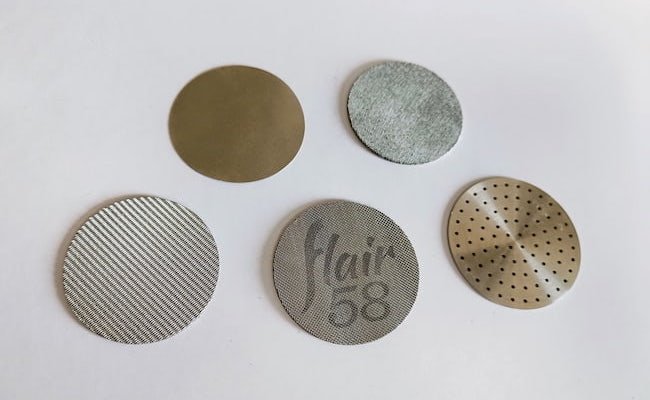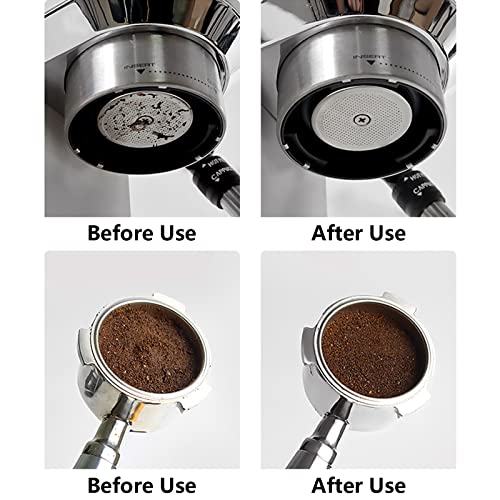What the puck? 🤷♂️
You may have heard the buzz about puck screens, but what exactly are they, and why are so many specialty coffee enthusiasts raving about them right now?
In this article, I’ll explore the benefits of using a puck screen, how it can elevate your espresso extraction, and why this nifty accessory is making waves in the coffee world.
What is a Puck Screen?
A puck screen is a thin, perforated metal disc designed to sit snugly atop your espresso puck before extraction.
It’s a relatively recent innovation in specialty coffee. I think the tiny brand Bplus from Taiwan may have been the first one to introduce the concept, although I may be wrong.
However, soon after Flair followed along, adopting it as an integral part of their Flair 58 espresso maker, and from there it spread like wildfire.
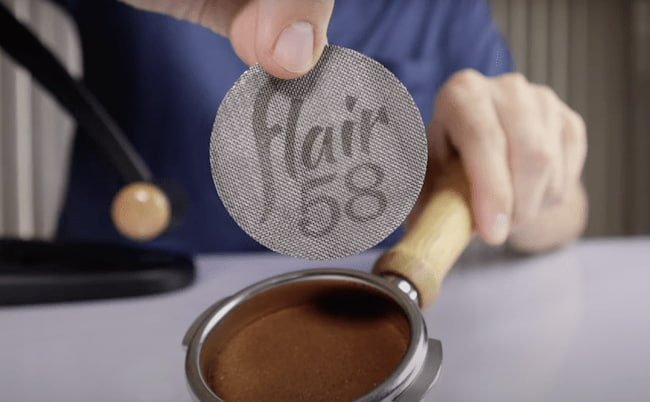
How to Use a Puck Screen
Incorporating a puck screen into your espresso routine is simple: Just prepare your espresso puck as you normally would, ensuring an even and consistent tamp.
Then position the puck screen on top of the coffee puck, making sure that it’s flush with the tamped coffee. Finally, attach your portafilter to the group head and pull the shot as usual.
Typically, it’s easy to remove the puck screen afterward, but sometimes it can be necessary to knock your portafilter against something to help loosen it. I usually just tap it against the meaty part of my palm once or twice, and then the screen will slide out easily.
The Perks of Using a Puck Screen
Let’s dive into the main advantages of adding a puck screen to your espresso toolkit:
- Cleaning: A puck screen keeps your group head spick-and-span by acting as a barrier between the coffee puck and the group head, reducing the need to purge water after each shot. For me, this is probably the most significant reason that I use a puck screen almost every single time. Cleaning a shower screen can be a chore.
- Drier pucks: I have noticed that pucks tend to be more dry when using a puck screen. I’m not sure the exact reason for this, but perhaps the screen makes it easier for the 3-way solenoid valve to get rid of excess water. Dry pucks are easier to knock out of your portafilter, so this also ties into the cleanliness and workflow point above.
- Water Distribution: Puck screens help distribute water uniformly across the coffee puck, ensuring a more consistent extraction.
- Channeling Prevention: A powerful gush from the group head can sometimes cause channeling in your espresso shot, leading to uneven extraction. A puck screen serves as a buffer or shield, minimizing the impact, and thereby, the risk of channeling.
- Steam Buffer: If your espresso machine is brewing too hot, steam can cause the top of the puck to “explode,” leading to uneven extraction. Again, a puck screen provides an extra layer of defense against this issue (it’s still advisable/preferable to invest in a machine that brews at the right temperature, however).
Channeling is a common challenge when it comes to extraction.
It occurs when water finds an easier path through the coffee puck – and water is lazy, it will always find the path of least resistance.
Channeling can happen due to a variety of factors, such as uneven tamping, inconsistent grind size, or errors in the puck preparation.
However, a very common cause is due to uneven water flow from the group head. A puck screen helps to minimize the risk of channeling by taking some of the impact of the water on the coffee puck. This allows for more even water distribution and (in theory) superior overall extraction.
The best Puck Screen?
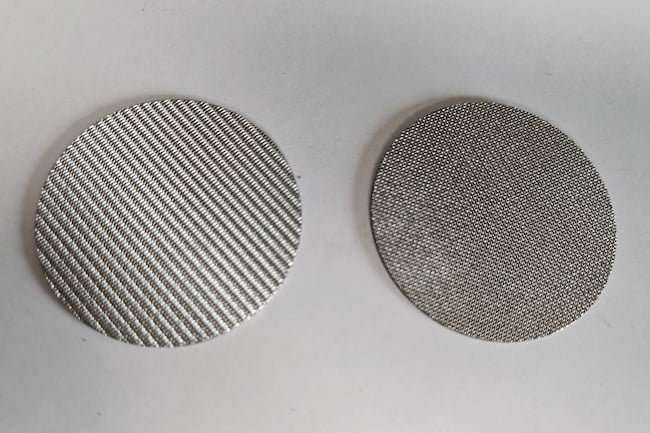
1: Mesh Filters
Mesh filters are the original choice. They are easy to buy online and can be found in various sizes and densities.
If you’re unsure which puck screen to get, this is the best place to start since you can easily find an affordable one regardless of the size of your basket.
There are only a few downsides to mesh filters:
- They require some cleaning, as coffee grounds and oils can get stuck in the fine mesh.
- The fine mesh can be difficult to clean thoroughly, even with regular rinsing.
2: Steel Disc Puck Screen
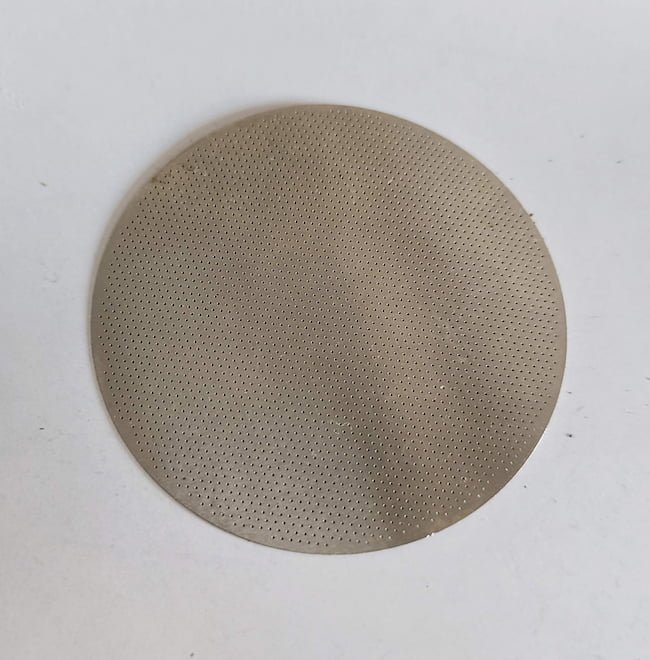
Stainless steel filters are on the surface very similar to Aeropress steek filters. However, they have a smaller diameter and are designed to fit your basket. They offer a couple of advantages over mesh filters:
- They’re easier to clean because there are no mesh holes for the grounds to get stuck in. This is a big plus.
- They are thin and ultra-light, ensuring no impact on thermal stability.
Some people think they are less efficient at dispersing the water stream than the mesh filters and more prone to channeling.
I also thought so initially, but now I’m not so sure. The jury’s still out on this one.
It’s difficult to find this type of puck screen in other sizes besides the standard 58 mm portafilter size.
However, it’s a solid coffee accessory that I think most espresso lovers should add to their collection..
3: MHW-3BOMBER Puck Screen

I recently got a slightly improved version of the AeroPress-style puck screen. This model is made by the Chinese brand MHW-3BOMBER.
It’s thicker than the AeroPress filter and has different-sized holes on each side.
The idea is that this will still give you all the benefits of a mesh puck screen while being as easy to clean as the simple steel disc.
I do like the craftmanship and design of this puck screen, but I don’t notice much of a difference in real-life performance compared to the thin stainless steel disk.
Theoretically, I can see how it should disperse the water more evenly. However, it’s difficult to predict how the water actually flows inside the basket when it’s under pressure.
The pucks look about the same as they do with the stainless steel disc; in other words a bit more muddy and messy compared to the mesh screen.
Still, I applaud this innovative type of design, and it’s one of the only puck screens on the market that is offering something new.
4: Ikape/BENO/UNBRANDED Puck screen
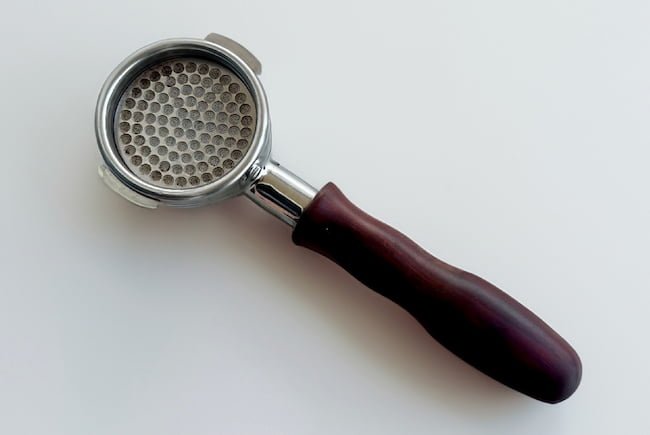
Another recent addition to my collection of puck screens is this one.
So far, I think this is my favorite puck screen in my collection (in a close contest with the one from MHW-3Bomber).
You could probably call it a unibody design, but it’s still strong and sturdy.
At the same time, the clever way the holes are spread out means you can get plenty of distribution.
The puck screen will retain fewer coffee oils than the mesh screen type and be much easier to clean.
At the same time, the thickness means that there’s not much of an impact on thermal stability.
In some markets, this design is sold as Beno or unbranded (like this one). There’s also an almost identical version branded as Ikape on Amazon.
Overall, this is just a really cheap gadget that will positively impact your espresso workflow.
5: Paper Filters
Paper filters are not what you think of when we talk about puck screens, but they are also worth mentioning since they have many of the same advantages while offering something unique.
- They’re disposable, making cleanup a breeze – just knock the whole filter and used grounds into the trash.
- 60 mm Mokapot filters work well for regular-sized portafilters, while Aeropress filters aren’t the ideal size, even though they are commonly recommended.
- You can use paper filters in a sort of “puck sandwich” where you place one in the bottom of the basket and another on top. This will allow you to grind even finer (even if you’re already using a high-end basket such as VST,) resulting in a higher extraction
One downside of paper filters is that they can be challenging to seat perfectly on top of the coffee puck, potentially leading to uneven extraction.
Always purchase the correct size filter for your espresso maker/portafilter (e.g., 58mm, 54mm, or 51mm).
Proper cleaning and compatibility are crucial for optimal coffee extraction, regardless of the filter type.
How to clean a puck screen?
- Rinse your filter under water immediately after use.
- A steam wand spray removes finer particles from the filter’s surface. You can just steam it in a milk pitcher with your espresso machine.
- Soak your filter in a coffee-specific cleaner like Cafiza for a deep clean, once in a while to remove nasty oils.
- If you use a disc-style puck screen instead of the typical mesh type, you can probably get away with a lighter, less rigorous cleaning.
Conclusion: Is a Puck Screen Worth the Investment?
A puck screen might not be as essential as a quality basket or a decent tamper. However, it’s an accessory with some pretty cool upsides: A smoother, cleaner workflow plus a reduced risk of uneven extraction.
With a relatively low price point compared to so many things in the jungle that is espresso accessories, it’s a small investment that can make a big difference in your workflow and shot consistency.
Remember, the world of specialty coffee is all about experimentation and finding the perfect balance between variables. A puck screen might be the missing piece in your quest for espresso perfection. So why not give it a shot?
